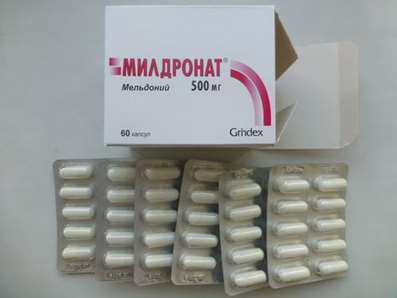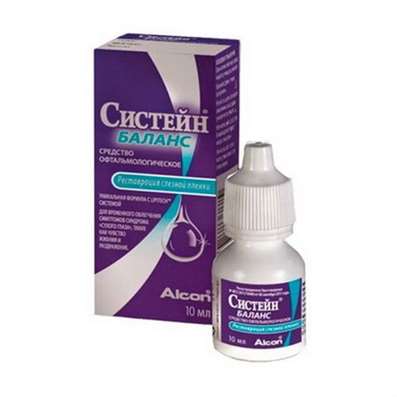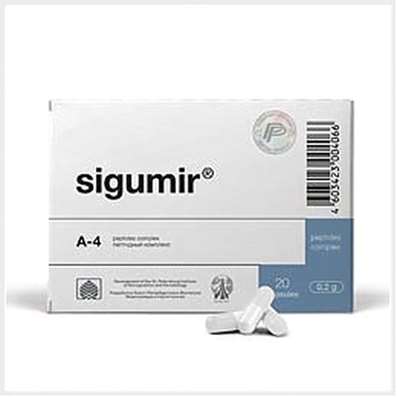Instruction for use: Potassium iodide (Kalii iodidum)
I want this, give me price
Pharmacological group
Hormones of the thyroid and parathyroid glands, their analogs and antagonists (including antithyroid agents) / 67 /
Macro and microelements
Nosological classification (ICD-10)
E01 Thyroid gland diseases associated with iodine deficiency and similar conditions
Hormonal deficiency of the thyroid gland due to iodine deficiency in the body, Goiter endemic, Iodine deficiency alimentary state, Iodine deficiency disease, Iodine Deficiency, Endemic cretinism
E01.0 Diffusive (endemic) goiter associated with iodine deficiency
Goiter, Endemic goiter, Accommodation in regions with iodine deficiency
E01.1 Multi-node (endemic) goiter associated with iodine deficiency
about, Thyroid Node, Nodular goiter of the thyroid gland, Endemic goiter
E05 Thyrotoxicosis [hyperthyroidism]
Von Bazedova's disease, Basedova's disease, Hyperthyroidism, Goiter toxic diffuse, Increased function of the thyroid gland, Thyrotoxic reaction, Toxic diffuse goiter, Toxic goiter, Thyroid enlargement with hyperthyroidism, The phenomenon of iodine-Bashedov
E05.5 Thyroid crisis or coma
thyrotoxic crisis, hypothyroid coma, Crease tireotoksicski
H11.3 Conjunctival haemorrhage
Hemorrhages in the eye
H17 Corneal scar and blurred vision
Corneal opacity, Corneal scars
H25 Star cataract
Age-related cataract, Cataract senile, Acute diarrheal cataract, Cataract
H26 Other cataracts
Cataract, Cataract radiation, Radial cataracts, Traumatic cataracts, Cataract
H31.3 Hemorrhage and rupture of the choroid
Hemorrhages in the eye
H58.8 Other disorders of the eye and adnexa in diseases classified elsewhere
Allergic corneal ulcer, Allergic eye damage
K11.2 Sialadenite
Calculous inflammation of the salivary glands, Stones of the ducts of the salivary glands
K11.7 Disturbances of secretion of salivary glands
hyperptyalism, xerostomia
R09.3 Sputum
Bronchial asthma with obstruction of sputum discharge, Isolation of viscous mucus, sputum hyperproduction, Hypersecretion of bronchial glands, Thick mucus, Obstruction of the bronchi of the mucous plug, The difficulty sputum discharge, Shortness of sputum, Shortness of sputum in acute and chronic respiratory diseases, Difficult expectoration, Cough with difficult expectoration of viscous, Cough with difficult expectoration, increased sputum viscosity, Poor expectoration, Trudnootdelyaemoy viscous mucus, sputum, Trudnootdelyaemoy bronchial secretion, Trudnootdelyaemoy viscous secret, Inflammation of the upper respiratory tract illness with difficult sputum
Z58.4 Effects of radiation contamination
Radiation injuries, Acute radiation damage, Radiation syndrome
CAS Code
7681-11-0
Characteristics
Inorganic iodine compound.
Colorless or white cubic crystals or white fine crystalline powder of bitter-salty taste, odorless. Well absorbs water from moist air. Easily soluble in water (1: 0.75), alcohol (1:12), glycerol (1: 2.5).
Pharmacology
Pharmacological action - filling iodine deficiency, expectorant, antifungal, mucolytic, radioprotective, antithyroid, resorptive.
When entering the body in physiological quantities, iodide normalizes the synthesis of thyroid hormones - triiodothyronine (T3) and thyroxine (T4), broken due to lack of iodine, normalizes the T3 / T4 ratio. In the cells of the epithelium of the thyroid follicle, under the action of thyroperoxidase, it oxidizes to elemental iodine, which provides iodination of tyrosine residues on the side chains of the thyroglobulin molecule with the formation of thyroid hormone precursors - monoiodotyrosines (MIT) and diiodotyrosines (DIT), with 140 tyrosine residues Thyroglobulin, iodinated only 1/5 of the exposed. Under the influence of oxidative enzymes, MIT and DIT condense with the formation of tyronins, the main ones of which are triiodothyronine (T3) and thyroxine (T4). A complex of thyroglobulin with tyronins by endocytosis moves from the colloid to the follicular cell where it is deposited. The release of thyroid hormones from the connection with thyroglobulin occurs in the apical part of the thyrotoxic by hydrolysis with lysosomal enzymes. As a result of hydrolysis of thyroglobulin, a number of compounds are released, incl. Triiodothyronine and thyroxine, as well as MIT and DIT. The latter deiodize inside the gland, and the released iodine is again used for the biosynthesis of hormones.
The introduction of a significant excess of iodide (more than 6 mg daily) with hyperthyroidism on the basis of feedback leads to suppression of the synthesis and release of the thyroid-stimulating hormone of the pituitary gland, inhibits the synthesis and release of (mainly) thyroid hormones, possibly by suppressing the proteolysis of thyroglobulin. In addition, iodide reduces the vascularization and size of the thyroid gland, compacts its tissue, prevents hyperplasia of the thyroid gland and restores its size in children and adolescents.
In patients with hyperthyroidism, a rapid remission of symptoms occurs, and therefore large doses of iodide are used in preoperative preparation of patients for thyroid resection to alleviate thyroidectomy (together with other antithyroid drugs) and with thyrotoxic crisis. The antithyroid effect of iodide is unstable - it lasts only 2-3 weeks and is used to temporarily reduce the function of the thyroid gland.
The radioprotective effect of iodide is due to the fact that it prevents the absorption of radioactive isotopes of iodine by the thyroid gland and protects it from the action of radiation. When taking potassium iodide simultaneously with exposure to radiation, the protective effect is about 97%; When taken 12 and 24 hours before the effects of radiation - 90% and 70%, respectively, when taken 1 and 3 hours after exposure - 85% and 50%, more than 6 hours - the effect is negligible.
Expectorant effect due to the fact that iodide, standing out by the bronchial mucous glands, causes reactive hyperemia of the mucosa, promotes liquefaction of sputum, incl. Due to the increase in the water secretion, enhances the function of the ciliated epithelium and increases the mucociliary clearance.
There are data on the effectiveness of iodide in erythema nodosum and fungal infections.
After intake, quickly and completely absorbed in the small intestine and within 2 hours is distributed in the intracellular space. It accumulates mainly in the thyroid gland (concentration of iodide more than 500 μg / g tissue), as well as in the salivary and mammary glands, the gastric mucosa. Well penetrates the placenta. It is excreted primarily by the kidneys (trace amounts are determined in the urine 10 minutes after admission, 80% of the dose is excreted within 48 hours, the rest - within 10-20 days), in part - with the secrets of salivary, bronchial, sweat and other glands.
Indications
Prevention of iodine-deficiency diseases (endemic goiter, etc.) in areas with iodine deficiency, incl. In children, adolescents, pregnant and lactating women, preventing recurrence of goiter after resection of the thyroid gland;
- treatment of goiter and other iodine-deficient diseases in children (including newborns), adolescents and adults;
- hyperthyroidism, preparation for resection of the thyroid gland, thyrotoxic crisis;
- difficult spitting of the sputum (inflammatory diseases of the upper respiratory tract, bronchial asthma, actinomycosis of the lungs);
- prevention of thyroid absorption of radioactive iodine and protection from radiation;
- syphilis (resorption of infiltrates in the Tertiary period) - ancillary treatment;
- in ophthalmology: cataracts, opacity of the cornea and vitreous humor, hemorrhage into the eye membranes, fungal lesions of the conjunctiva and cornea;
- in dentistry: inflammatory diseases of the salivary glands, xerostomia.
Contraindications
Hypersensitivity to iodine, expressed and hidden (for doses exceeding 150 mcg / day) thyroid gland hyperthyroidism, toxic thyroid adenoma, nodular goiter and other benign thyroid tumors (for doses exceeding 300 mcg / day, except for preoperative iodine therapy), Herpetiform dermatitis Dühring, pulmonary tuberculosis, nephritis, hemorrhagic diathesis, nephrosis, furunculosis, acne, pyoderma.
Restrictions
Pregnancy, breast-feeding.
pregnancy and lactation
During pregnancy and lactation, it is possible to use only in physiological (preventive) doses. Application during pregnancy can lead to suppression of thyroid function (hypothyroidism) and increase in its size in the fetus, and during breastfeeding - to the appearance of rash and a decrease in thyroid function in the newborn (at doses over 300 mcg iodine per day, breastfeeding should be discontinued ).
Side effects
On the part of the intestine: nausea, vomiting, dyspeptic phenomena, gastralgia, diarrhea.
From the nervous system and sensory organs: anxiety, headache.
Allergic reactions: angioedema, hemorrhages on the skin and mucous membranes, swelling of the salivary glands, urticaria.
Other: changes in the thyroid function (hyperthyroidism, hypothyroidism), hyperkalemia, parotitis, iodine toxicity (confusion, irregular heartbeat, numbness, tingling, pain or weakness in the hands and feet, unusual lethargy, weakness or heaviness in the legs); Iodism (with prolonged use, especially in high doses): burning in the mouth or throat, metallic taste in the mouth, increased salivation, tenderness of the teeth and gums, redness of the conjunctiva, edema of the eyelids, rhinitis, fever, arthralgia, acne, dermatitis (exfoliative and others .), Eosinophilia.
Interaction
Antithyroid effect increases (mutually) antithyroid drugs. Thyrotropic hormone activates the accumulation of iodine by the thyroid gland, perchlorate and potassium thiocyanate - inhibit. Taking high doses of iodide simultaneously with potassium-sparing diuretics increases the risk of developing hyperkalemia and arrhythmia. With simultaneous admission with ACE inhibitors, the risk of developing hyperkalemia also increases, with lithium preparations - the risk of hypothyroidism and goiter.
Overdose
Symptoms of acute overdose: dyeing of the oral mucosa in brown, rhinitis, bronchitis, gastroenteritis, swelling of the vocal cords, bleeding from the urinary tract, anuria, collapse (up to a lethal outcome).
Treatment of acute overdose: washing the stomach with starch solution (before the disappearance of the blue color of the solution) and 1% solution of sodium thiosulfate, ingestion of flour from flour, corn, potato, rice or oat thick broth, symptomatic and supportive therapy.
Routes of administration
Inside, conjunctivally.
Precautions
Before the beginning of treatment it is necessary to exclude malignant lesion of the thyroid gland. Caution is used in patients with impaired renal function (periodic monitoring of the potassium level in the blood is necessary).

 Cart
Cart





